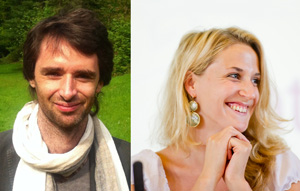Columnists: Erica Hope and Brook Riley,

Published on: 23 Sep 2013
EU Commission Courting Disaster on 2030 Dossier
Sometimes the most important issues are buried in technical detail and decided far from public scrutiny before anyone realizes it’s too late.
By the end of this month the European Commission will have made fundamental decisions on the level of ambition it is prepared to support for 2030 targets to cut greenhouse gas emissions, save energy and increase the share of renewables.
These decisions will be made, not through high profile, set-piece summits and negotiations, but through the daily grind of below-radar impact assessment work.
Impact assessments are supposed to provide no-nonsense facts and analysis on which to base political and policy decisions. So what if the Commission’s ‘facts’ were actually pre-defined by fearful political compromise? What if climate science and hard evidence of the potential for energy efficiency and renewables were sidelined at even this supposedly impartial stage in the process?
The truth is the 2030 climate and energy dossier is off to a very bad start. Unless urgent action is taken, the Commission will have destroyed the chances of good legislation before the politicians have even got to work.
Part 1. Climate change on a coin toss
Whilst the Commission is dealing with its so-called ‘facts’, the United Nation's panel of climate experts is at the same time preparing to release some facts of its own. The first part of the latest review of the best available scientific research, which the Intergovernmental Panel on Climate Change updates every five years, is due out later this month.
The report will give the starkest reminder yet of the harsh realities of global warming.
The Earth can only soak up so many tons of greenhouse gases without suffering irreversible damages. Just this week, a group of leading climate scientists published a statement saying that if we continue with business as usual, the planet may be 4°C warmer than pre-industrial periods by the end of this century, or even before. This is twice the 2°C threshold set by the international community as a ‘safe’ limit of global warming.
In principle, the EU is doing its bit to keep within the 2°C limit. Like other developed countries, its member states have pledged to put in place policies to ensure this.
Yet it turns out that the EU is not actually aiming to stay below 2°C at all. It is in fact working on the basis of a 50/50 chance of bursting that 'safe' threshold. EU leaders – though most of them seem to be blissfully unaware of it – are risking all on the same odds as a coin toss.
Here is how the numbers work:
- The EU is committed to cutting emissions by 20% by 2020, and is developing plans to achieve 80% cuts by 2050.
- According to the United Nations’ panel on climate change, these cuts are at the lower end of the level that all developed countries will need to make in order to keep greenhouse gas concentrations in the atmosphere below 450 parts per million. (Keeping below this level would also require developing countries to make significant cuts in their own emissions).
- A special EU climate change expert group and the International Energy Agency both say that 450 parts per million would only give a 50/50 chance of keeping global temperature rises below 2°C.
The nature of the action which the EU and the rest of the world will need to take to increase the odds of staying below 2°C goes beyond the scope of this article. But the first priority is to wake up to the huge risks we are currently taking with our future. Sadly, policymakers around Europe have a long way to go before the first vital step of recognition.
We are right now faced with a stark, and potentially catastrophic, case in point. At this very moment the European Commission is carrying out modelling work for objectives for 2030 to cut emissions, save energy and develop renewables. The boundary conditions it has chosen for this work are based solely on the 50/50 probability of exceeding 2°C. The Commission's work will be finished at the end of September. Unless safer risk assumptions are made, Europe will lock itself into inadequate ambition for 2030 - and pay the consequences.
To be continued.
Other columns by Erica Hope and Brook Riley
Mar 2013
Feb 2013
Jul 2012
Mar 2012
Mar 2012










